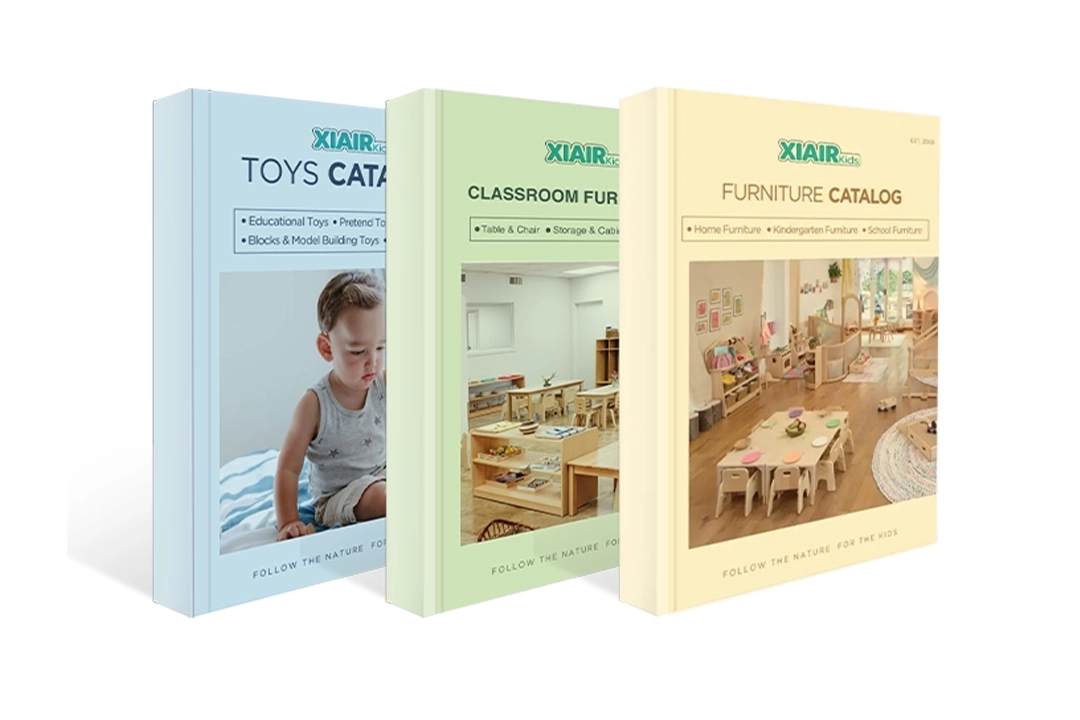Sand and Water Table for Classrooms & Daycare Centers
Engage children with our premium sand and water table, designed to inspire creativity, sensory exploration, and hands-on learning. Perfect for preschools, daycare centers, and home play areas, our durable and safe tables feature customizable sizes, removable basins, and easy-to-clean designs. Create an educational environment where kids can explore, experiment, and collaborate effortlessly. Upgrade your play space today with the ultimate solution for fun and learning combined!
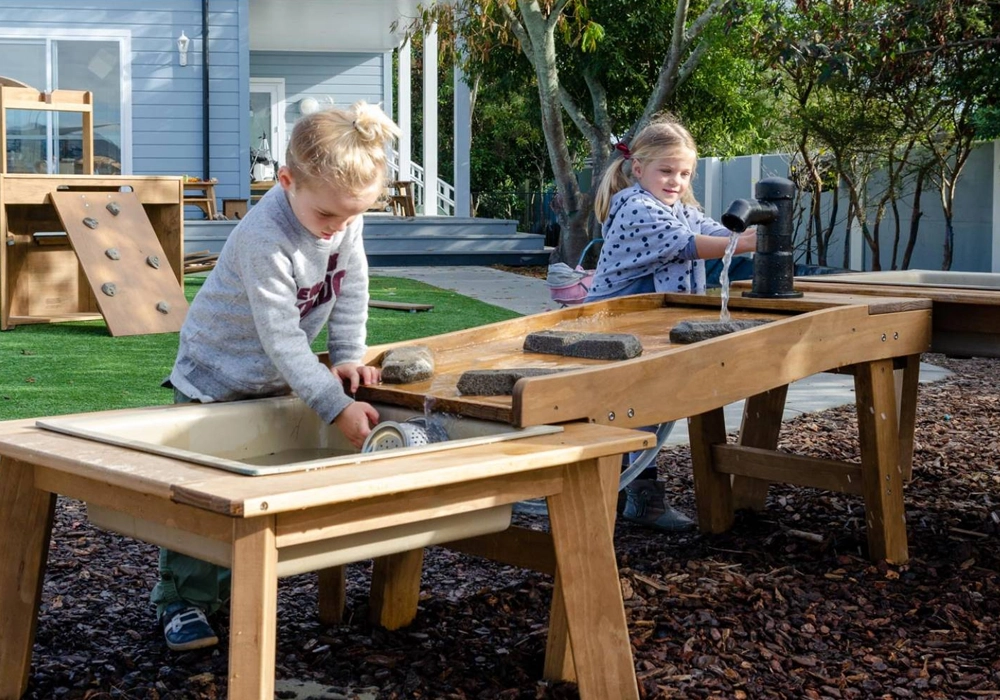
Various Types and Styles of Sand and Water Table
Explore various sand and water tables designed to suit every learning environment. Our collection includes different types and styles to cater to preschools, daycare centers, and early education classrooms' unique needs. Whether you're looking for traditional wooden tables, colorful plastic designs, or modular customization options, we have you covered.
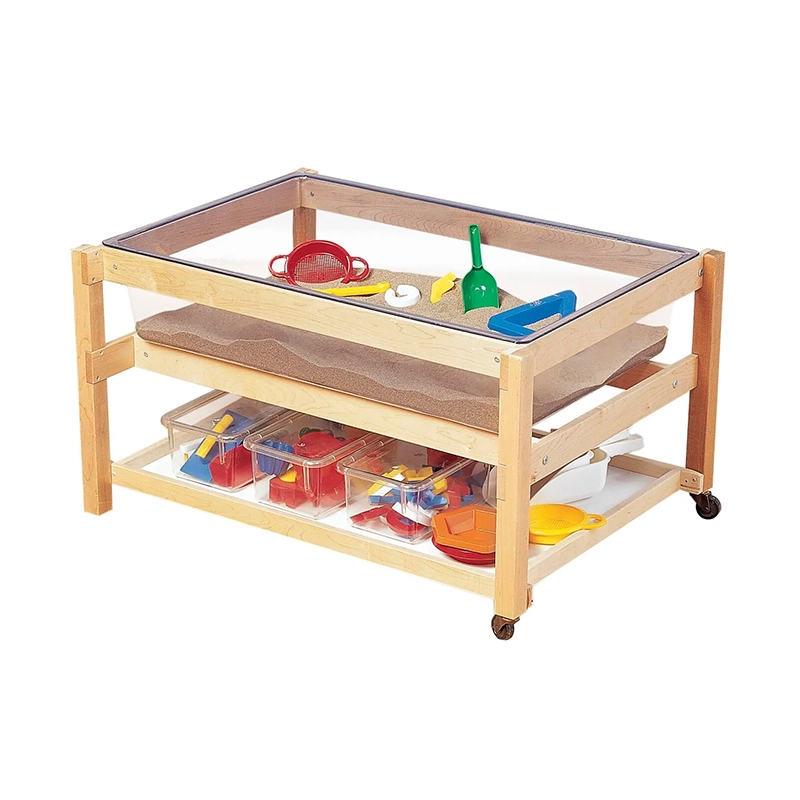
Early Childhood Sand Water Products
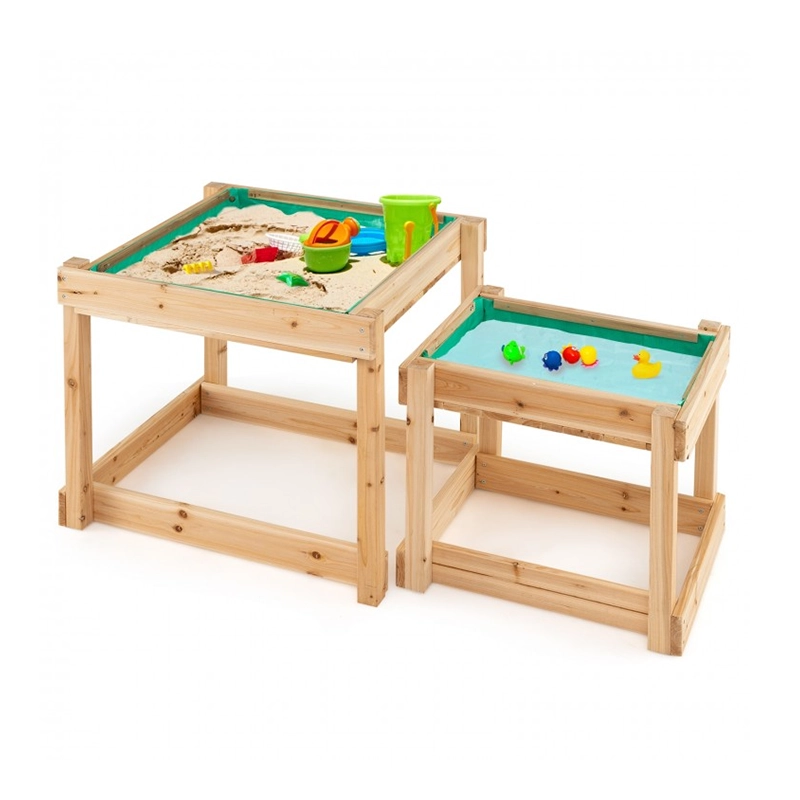
Wooden Sand and Water Tables
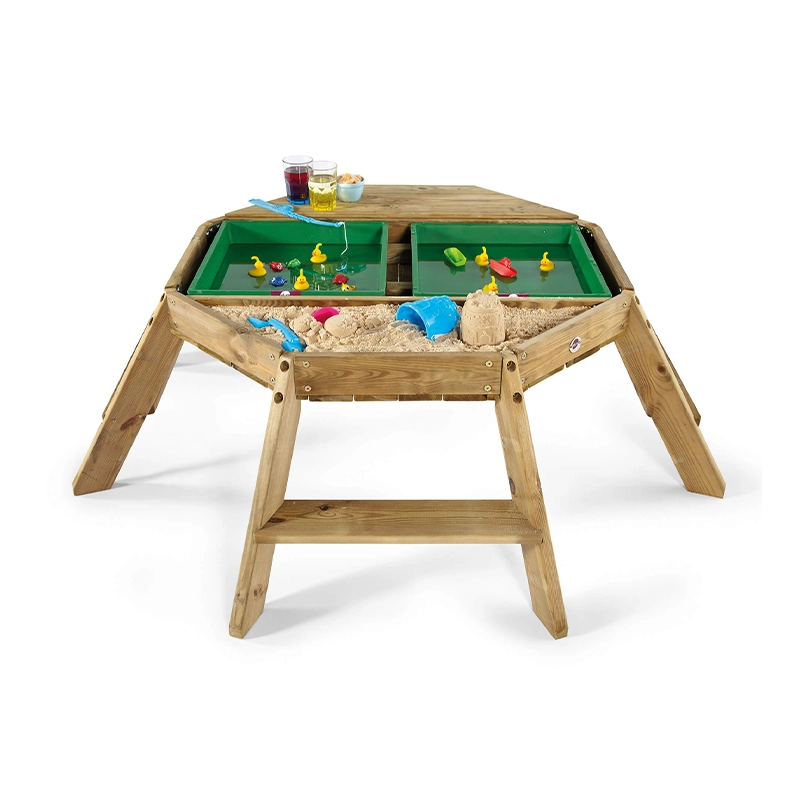
Timber Water Play Table
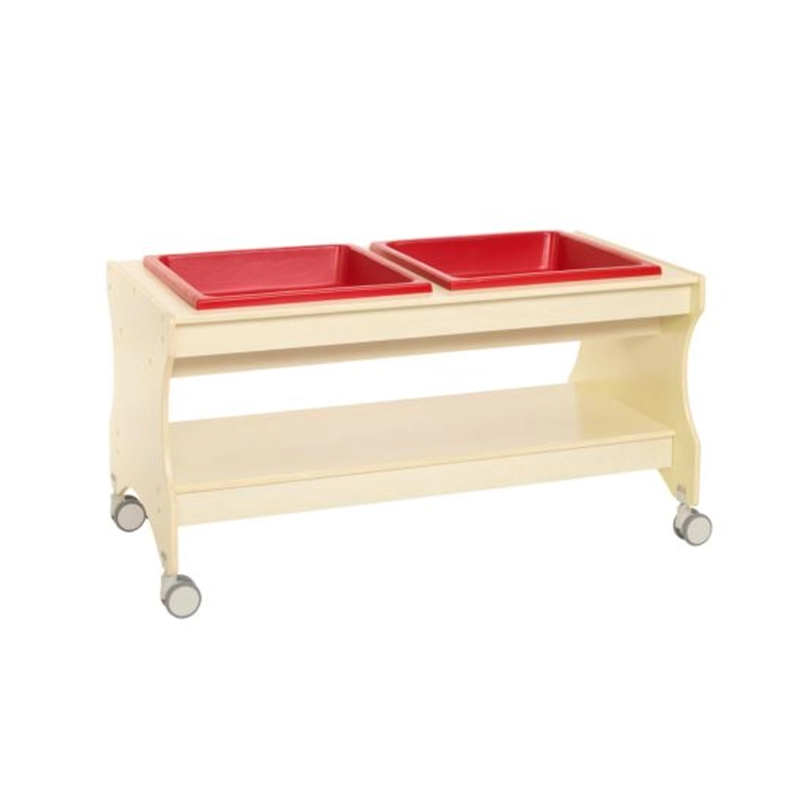
Mobile Sand and Water Table
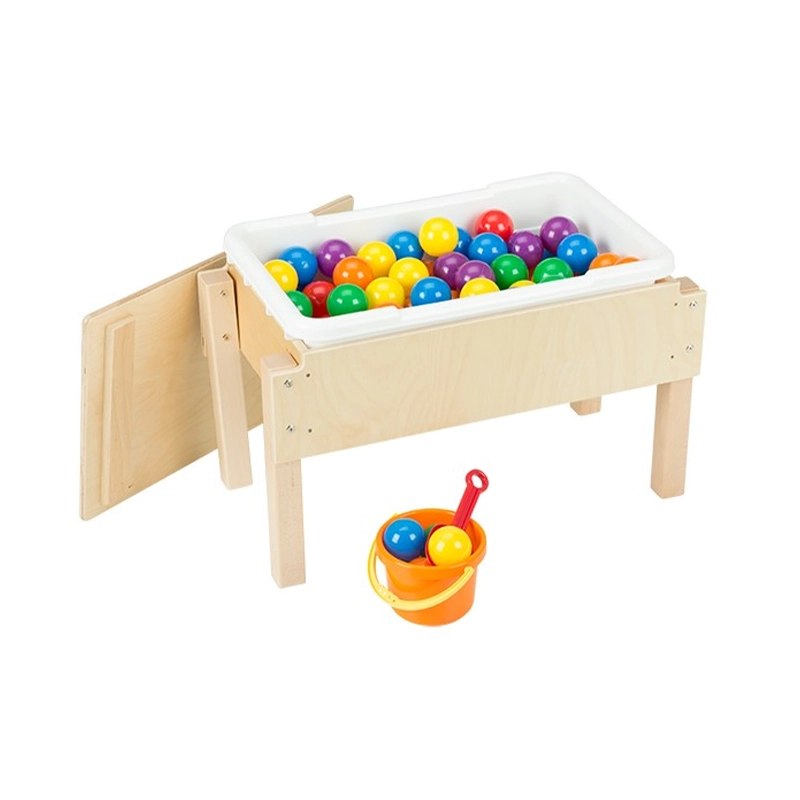
Toddler Sensory Table
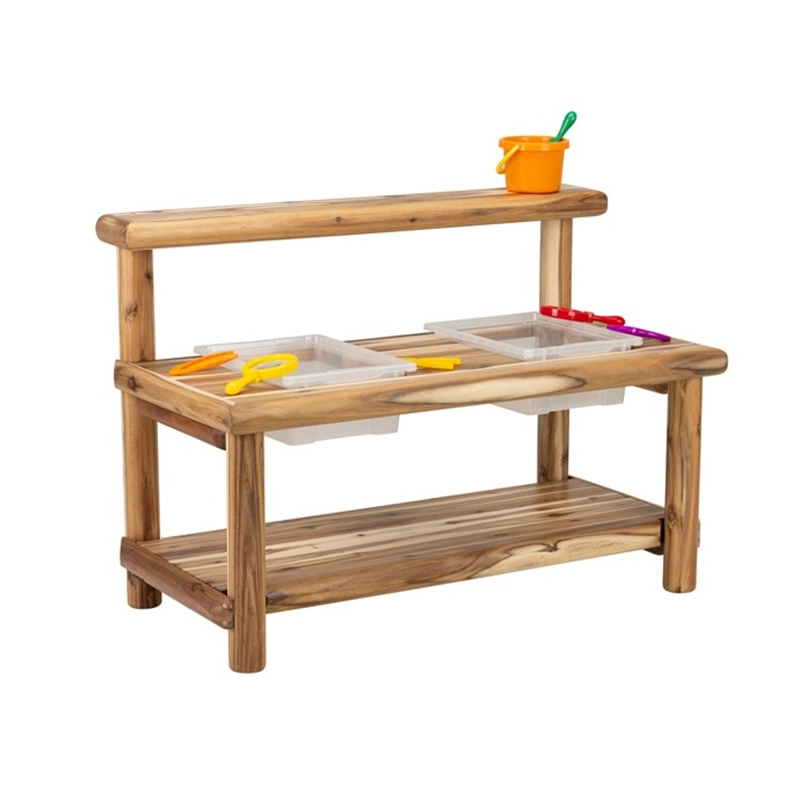
Outdoor Senory Table
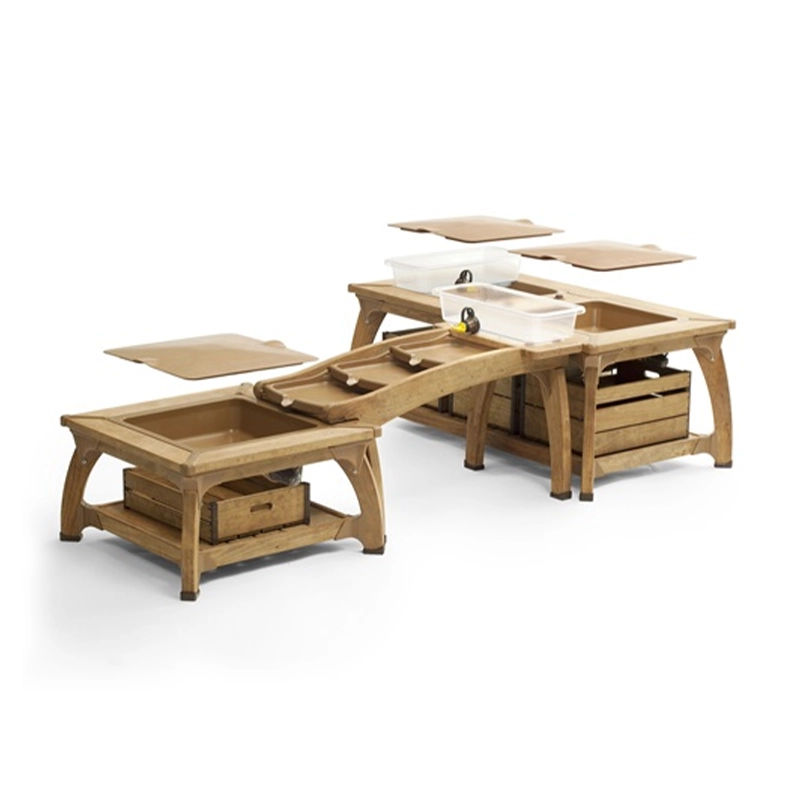
Outdoor Tunnel Water Play
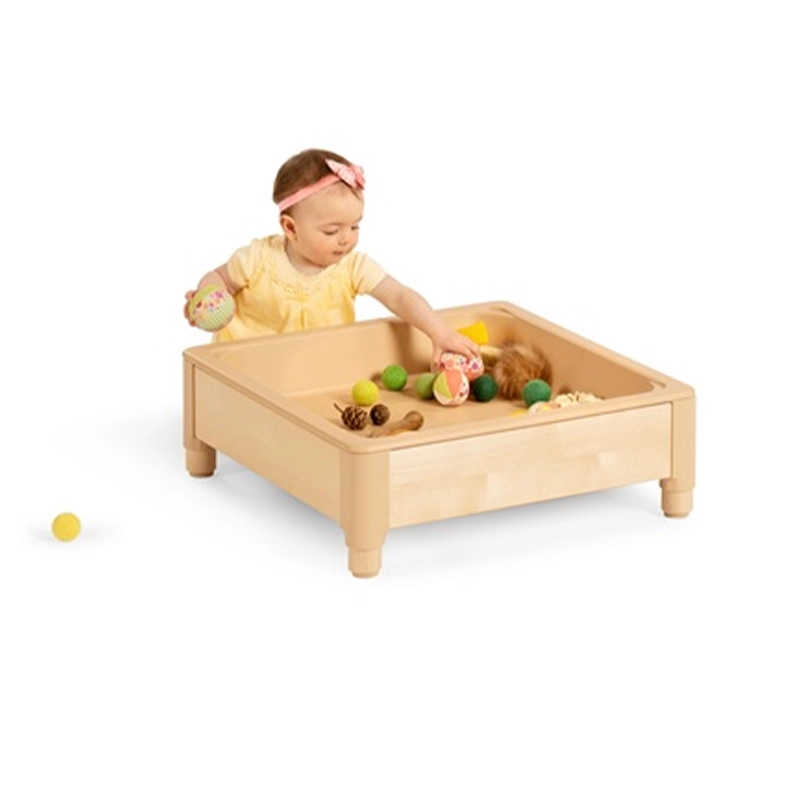
Small Sand and Water Table
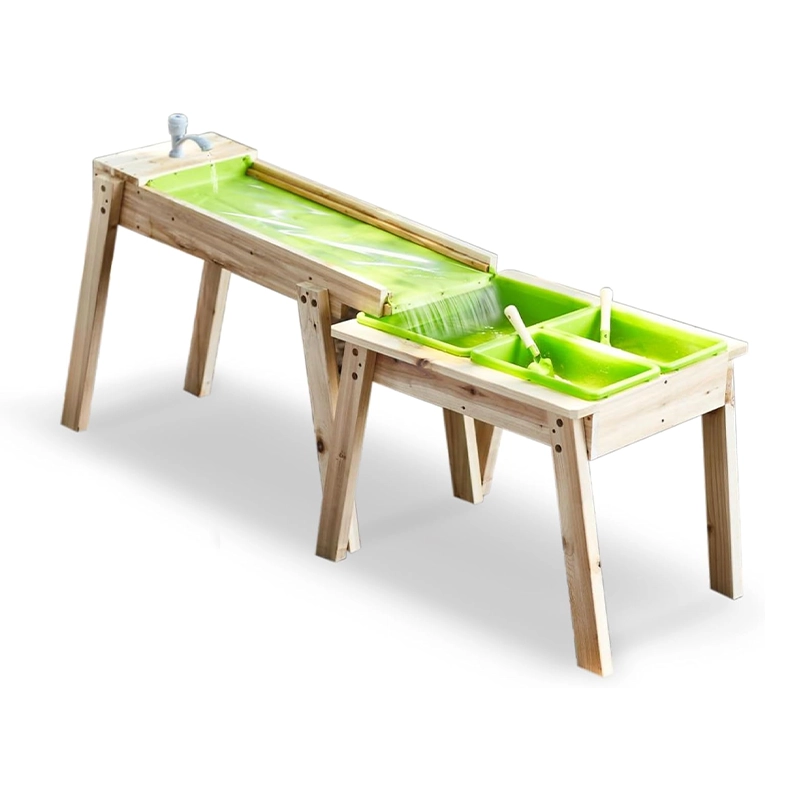
Rushing River Falls Sensory Table
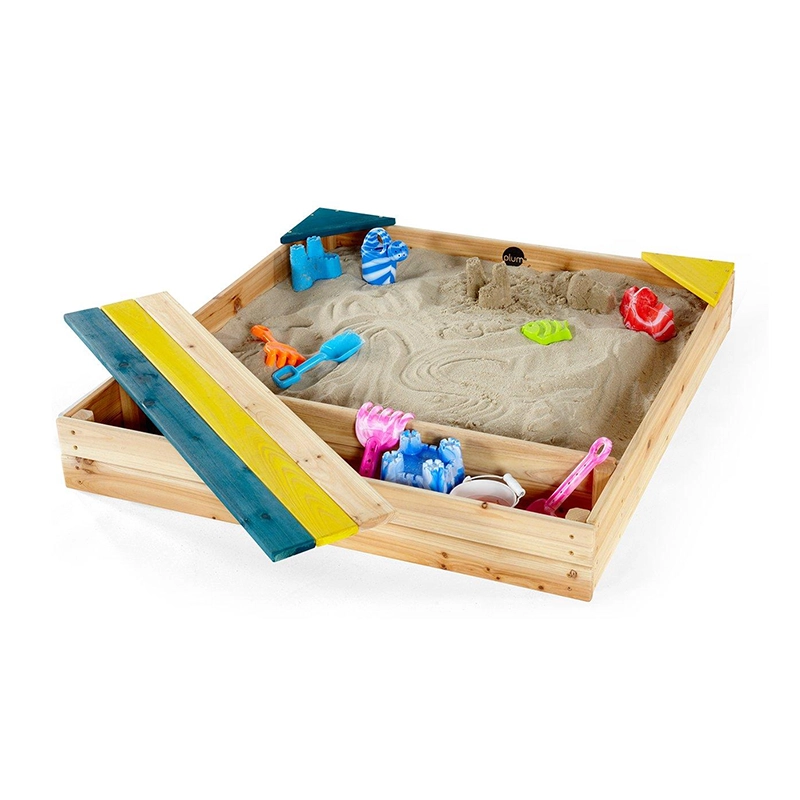
Sand & Water Play Pit
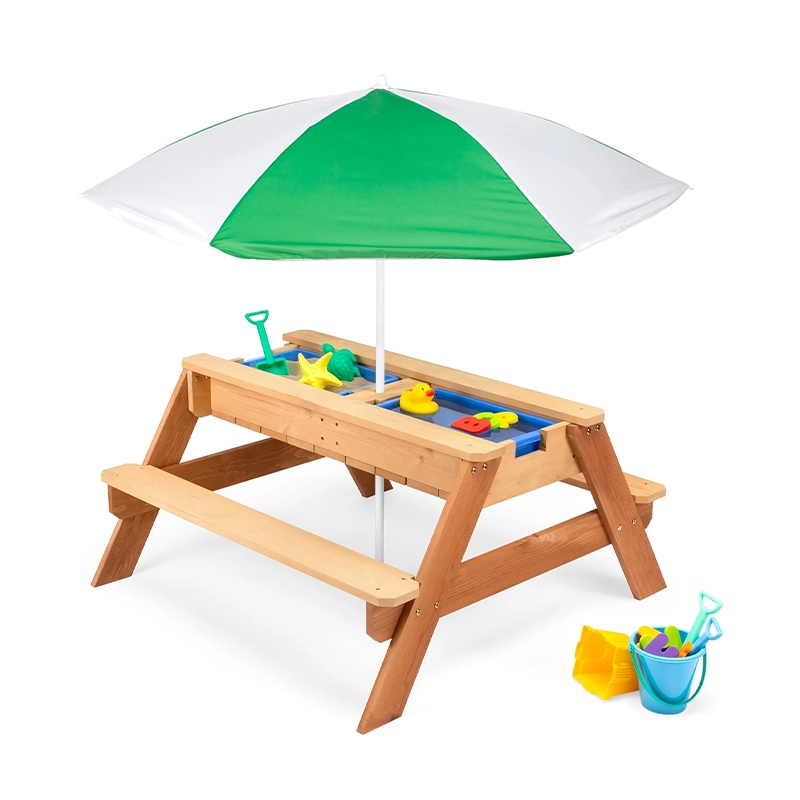
3-in-1 Sand & Water Table
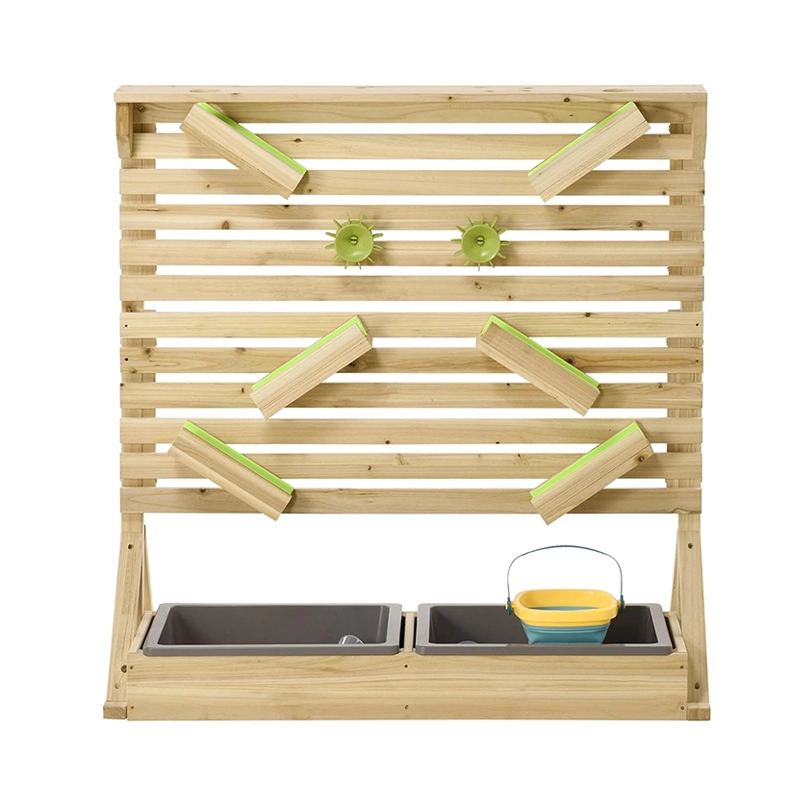
Sand and Water Playset
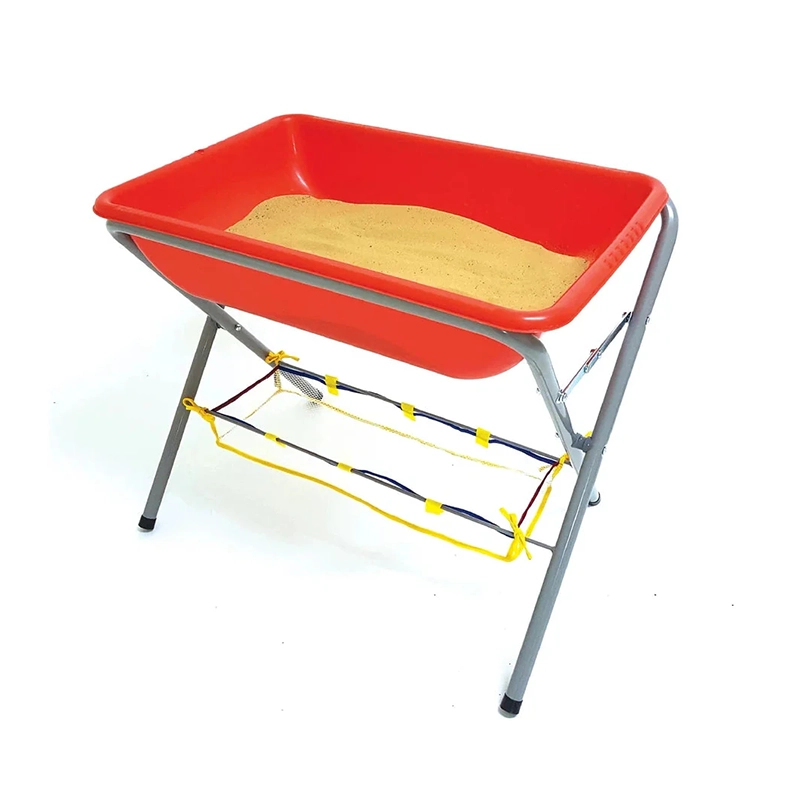
Sand & Water Activity Tub
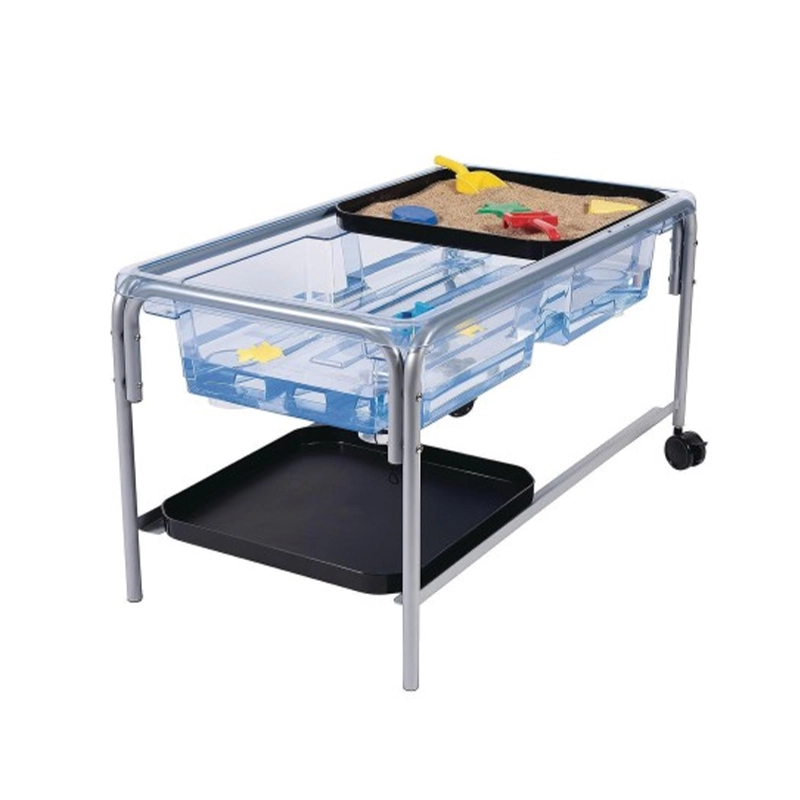
Sand and Water Sensory Table
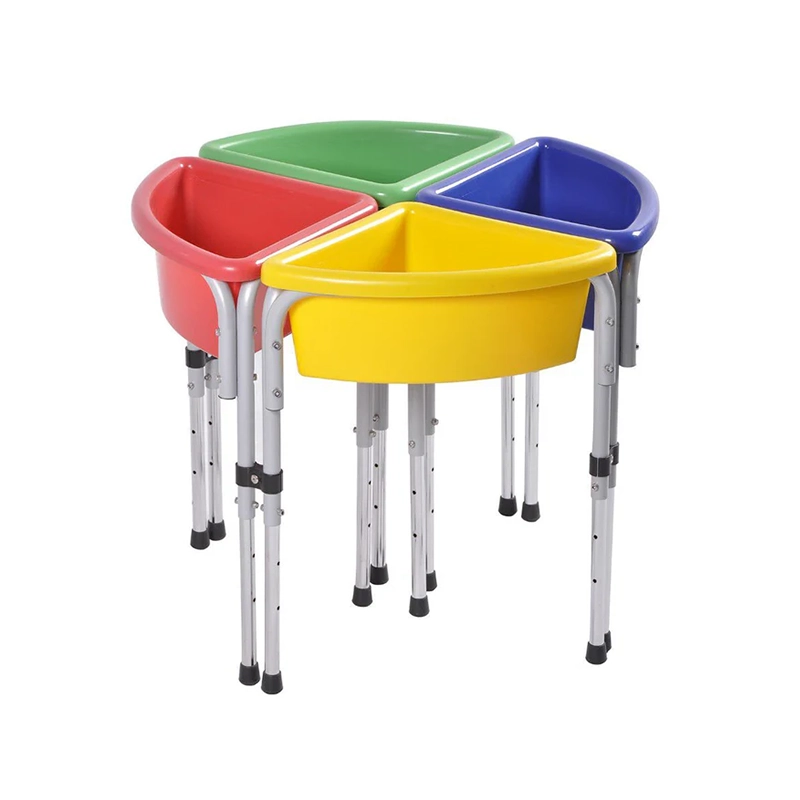
Sand & Water Tray Tables
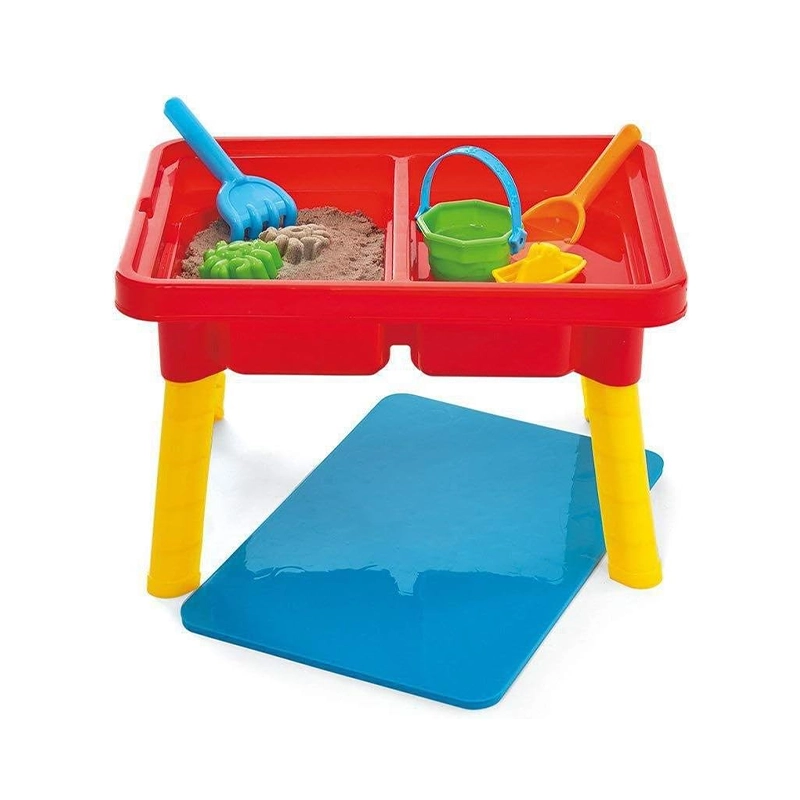
Sensory Kids Table with Lid
Trusted Manufacturer in Early Childhood Sand and Water Table
We believe any educational space's foundation is built on children's developmental needs. Our product range focuses on promoting safety, comfort, and educational value. Every piece enhances creativity, motor skills, and social interaction, ensuring children engage in meaningful play while developing key life skills.
Located in the strategic port city of Dalian, we provide comprehensive support that includes everything from custom product design to door-to-door shipping services. Our global footprint ensures that we can deliver the best service backed by CE and CPC certifications for quality and safety assurance no matter where you are.
Our mission is to exceed expectations with high-quality products, exceptional customer service, and a strong commitment to educational values. We’re ready to partner with you to transform your learning spaces into environments where children can thrive.
Materials for Sand and Water Table
The materials used for sand and water tables are crucial in their functionality, longevity, and safety. Whether you need a durable outdoor model or a child-friendly indoor one, it's essential to understand the different materials available and their benefits.
-
Wood Traditional and natural wooden sand and water tables are often made from durable hardwoods like oak or pine. They offer an aesthetically pleasing look but require extra maintenance to protect against water damage.
-
Plastic Plastic is a popular choice for sand and water tables due to its lightweight and easy-to-clean properties. High-density polyethylene (HDPE) is commonly used due to its strength, water resistance, and non-toxic properties. Plastic tables are ideal for outdoor use and are often more affordable.
-
Stainless Steel Stainless steel tables are known for their long-lasting durability and corrosion resistance. These tables are often used in high-end or industrial designs and are easy to clean, making them a good option for indoor and outdoor settings.
-
Acrylic Acrylic is a transparent or translucent plastic material with a sleek and modern look. It is strong, resistant to weathering, and easy to clean. While not as common as plastic or wood, acrylic is often chosen for its premium appearance.
-
Resin Resin is a composite material combining plastic and other elements to create a highly durable, weather-resistant, lightweight table. Resin tables are designed to withstand outdoor conditions and are relatively low-maintenance.
-
Glass Tempered glass is commonly used as the transparent cover of sand and water tables. It offers strength and safety without breaking easily. The smooth surface makes it easy to clean and maintain. Glass provides a clear view of the contents, enhancing the user experience.
What is a Sand and Water Table?
A sand and water table is designed for young children to explore, experiment, and engage in sensory play with sand, water, or other materials. These tables are often used in educational settings like schools, daycares, and playgrounds, but can also be used at home.
The table typically features a shallow, sturdy surface where kids can pour, sift, and manipulate sand and water. It often has additional features like scoops, funnels, and lids. Some tables are divided into sections for sand on one side and water on the other. In contrast, others are designed to hold either material individually or include accessories for added creativity (such as toy boats, small creatures, or construction tools).
Benefits of Sand and Water Table for Kids
Sand and water tables are versatile and interactive learning tools that provide children with hands-on experiences, allowing them to explore different textures, properties, and natural elements. These tables offer an opportunity for sensory play, cognitive development, and creative expression.
Sensory Development
Sand and water tables allow children to explore different textures and sensations, helping them refine their tactile senses. Manipulating sand and water promotes fine motor skills as children scoop, pour, and move materials. These activities also provide essential sensory stimulation, supporting the development of the brain's sensory processing systems.
Cognitive Growth
Children learn about basic scientific principles such as volume, displacement, and gravity through cause-and-effect experiments. The trial-and-error nature of play encourages problem-solving skills as children figure out how to move water or build stable sand structures. These experiences foster cognitive development and critical thinking.
Creativity and Imagination
Children use sand and water tables to create imaginative scenarios, such as building sandcastles or inventing stories about water play. The open-ended nature of the table encourages free play, allowing kids to express their creativity without limits. This type of play strengthens their imaginative skills and boosts creativity.
Creativity
Many soft play sets encourage imaginative play. Children use their creativity to build structures with blocks or role-play different scenarios in a soft play sensory room. This helps enhance problem-solving and critical-thinking skills.
Social Skills
Playing with others at the sand and water table encourages children to share, take turns, and collaborate, helping to develop critical social skills. They learn how to communicate effectively and negotiate with peers, fostering teamwork. This interactive play also allows children to navigate social dynamics and resolve conflicts.
Language Development
As children describe their actions at the table, they expand their vocabulary and improve their communication skills. Engaging in conversations about what they're building or experimenting with encourages them to use new words and phrases. Storytelling and descriptive language also emerge as they create imaginative scenarios during play.
Emotional Regulation
The repetitive motions of scooping, pouring, and digging can calm children and help them regulate their emotions. Engaging in such focused play promotes emotional stability, providing a therapeutic outlet for stress or frustration. It also fosters a sense of accomplishment and boosts self-esteem as children master new skills.
Physical Development
Sand and water play encourages children to engage their whole bodies, which helps develop sensory integration and coordination. Lifting, carrying, and pouring sand or water builds strength and endurance. These physical activities contribute to the development of balance and motor skills, which are essential for overall physical growth.
Key Features to Consider When Choosing a Sand and Water Table
Selecting the right sand and water table for your preschool or kindergarten can be challenging, but focusing on a few key features can help make the process easier. These features ensure the table is practical and safe and enrich the children's overall experience.
Size and Space
When selecting a sand and water table, consider the available space in your home, yard, or classroom. Tables come in various sizes, from compact models ideal for small spaces to more extensive, multi-section tables for more expansive play. Ensure the table fits comfortably in the intended play area while allowing enough space for children to move around.
Quality and Durability
Look for tables made from durable, non-toxic materials such as high-density plastic, sturdy wood, or stainless steel. The material should withstand frequent exposure to water, sun, and sand. If the table will be used outdoors, UV-resistant materials will help prevent fading or degradation over time.
Age
Ensure the sand and water table suits the age group you are buying for. Some tables are designed for toddlers with lower sides for easy access, while others are built for older children, offering larger surface areas and additional features. Pay attention to age recommendations and safety labels for guidance on which table is best for your child’s developmental stage.
Safety
Safety should always be a top priority. Choose a table with rounded edges to avoid sharp corners that could harm a child. Also, check if the table has small parts that could be a choking hazard. For added safety, opt for models with drainage holes to prevent water buildup, which can pose a slipping risk.
Cleaning and Maintenance
Since sand and water play can be messy, look for a table that is easy to clean. Models with removable trays or covers can help reduce mess and make cleaning more manageable. Materials like plastic are generally easier to wipe down but ensure the table has features that allow quick and efficient water drainage.
Accessories
Some sand and water tables have extra features like lids, toy accessories, or multi-level designs. Lids help keep the table clean when not in use, while accessories like shovels, rakes, or cups encourage more interactive play. Multi-section tables allow for separate areas for sand and water, which can add variety to the play experience.
Types of Sand for Water and Sand table Materials
When it comes to water tables, choosing the right kind of water and sand and the right features for your table is essential to keeping children engaged and ensuring a fun, safe experience. Here are some important considerations:
1. Natural Play Sand
Natural play sand is the most commonly used material for sand and water tables. It is usually fine-grained and free from harmful chemicals, making it safe for children. You can find this sand at most home improvement stores or specialized play stores.
2. Colored Sand
For a more visually stimulating experience, colored sand is a great choice. It is available in various hues, from pastel shades to vibrant tones, and adds an extra dimension to sensory play. Colored sand is often made with non-toxic dyes, but it’s essential to check the labels to ensure safety for children.
3. Kinetic Sand
Kinetic sand is a unique type of sand that sticks together, offering a moldable texture that kids love. It is often marketed as a “magic” sand because it behaves differently from regular sand—making it perfect for imaginative play. However, kinetic sand can be trickier to clean up than regular sand, so keep that in mind when choosing it.
4. Safe Synthetic Sand
For parents concerned about natural sand’s potential for bacteria or contaminants, safe synthetic sands such as those made by brands like “Smarty Sand” or “Sandtastik” offer peace of mind. These are typically manufactured using non-toxic, natural components and are designed to be more durable than natural sand.
5. Organic Sand
For eco-conscious families, organic sand options are available. These sands are often sustainably sourced and chemical-free, providing an environmentally friendly alternative.
6. Tap Water
Regular tap water is the most straightforward and accessible option for most households. It’s convenient, and for short play sessions, it should be fine. Just make sure the water temperature is comfortable for little hands.
7. Distilled Water
For a cleaner option, some parents opt for distilled water, which has been purified to remove impurities. This is especially useful for families living in areas with hard water or water that contain high levels of minerals, which may stain the table or toys.
8. Flavored or Colored Water
Adding a few drops of food coloring or child-safe flavored water can make playtime fun and engaging. This can enhance the sensory experience and encourage further exploration, though you may need to clean the table more often.
9. Temperature-Controlled Water
Parents may wish to use warm water on their tables in colder weather. The heated water can keep children playing longer, even on chilly days. However, it’s essential to monitor the temperature to prevent burns.
Sand and Water Table Toys
Sand and water tables are typically equipped with various toys to enhance sensory play, foster creativity, and build cognitive and motor skills. These water and sand table toys encourage hands-on exploration and experimentation, turning the play experience into an engaging learning opportunity.
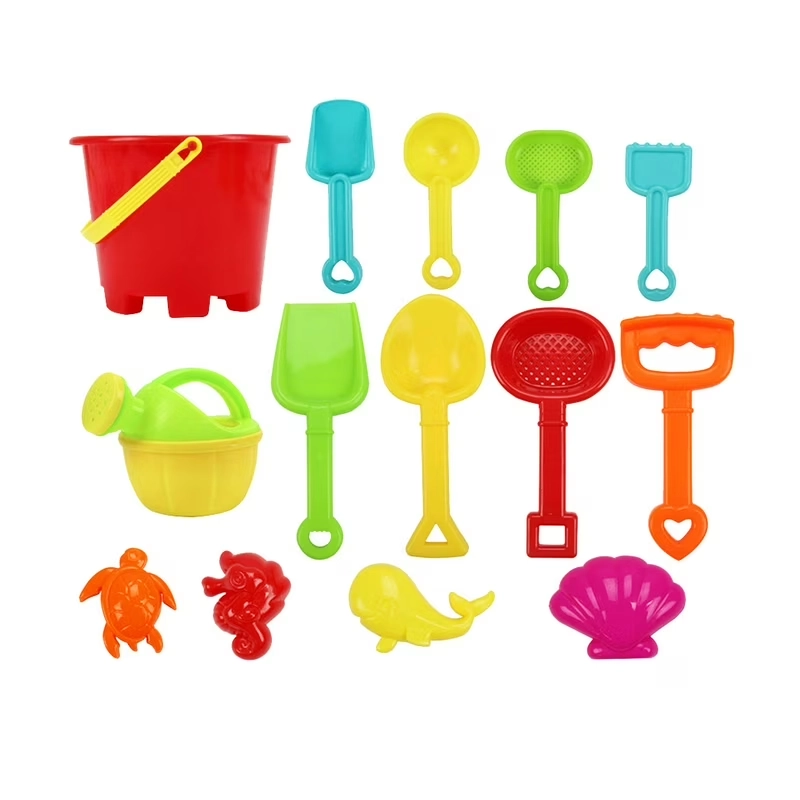
Scoops and Shovels
Scoops and shovels are essential tools for children to transfer sand and water. They help them develop hand-eye coordination and fine motor skills. They also encourage imaginative play, as kids use them to create sand structures or dig for "treasures."
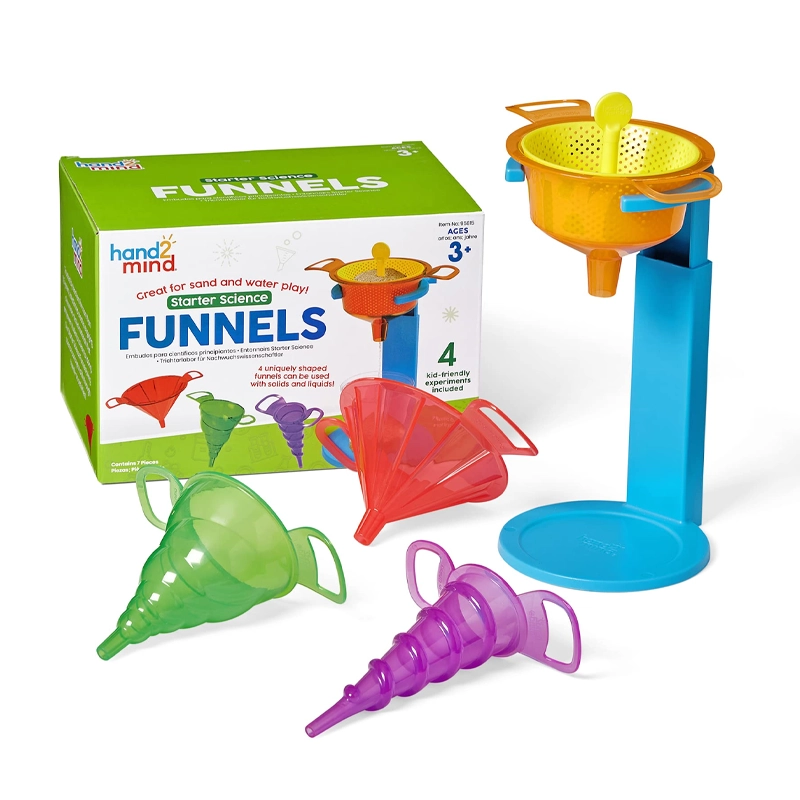
Funnels and Pipes
Funnels and pipes allow children to explore the movement of water and sand in different directions, promoting an understanding of flow, gravity, and cause and effect. These toys stimulate curiosity as kids experiment with how materials move through various channels.
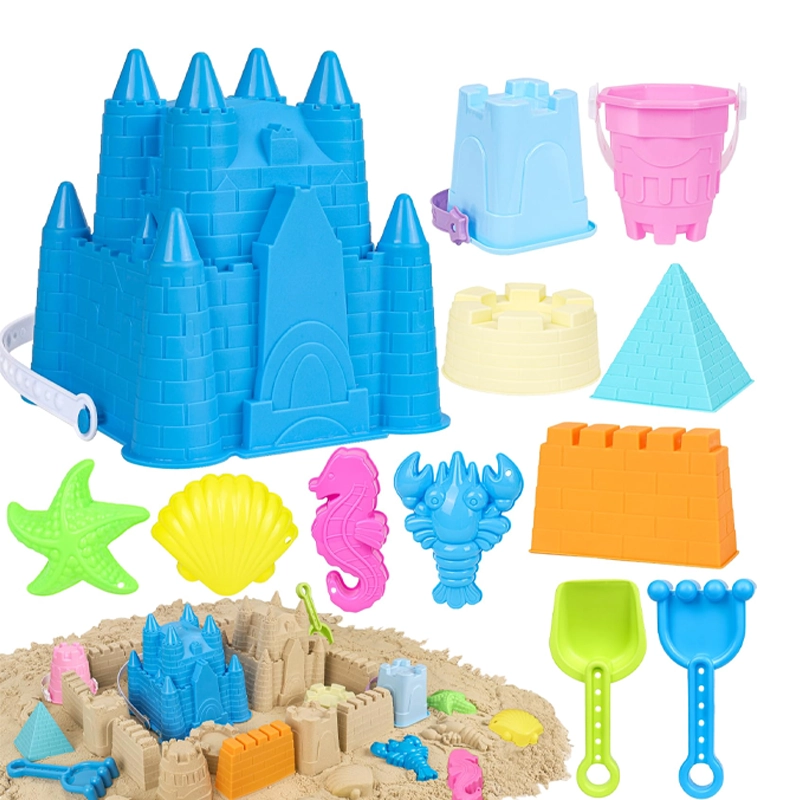
Molds and Sand Castle Tools
Molds and castle-building tools allow children to shape and sculpt the sand, which enhances their creativity and spatial awareness. These tools help develop tactile sensory skills and encourage artistic expression as kids create intricate designs.
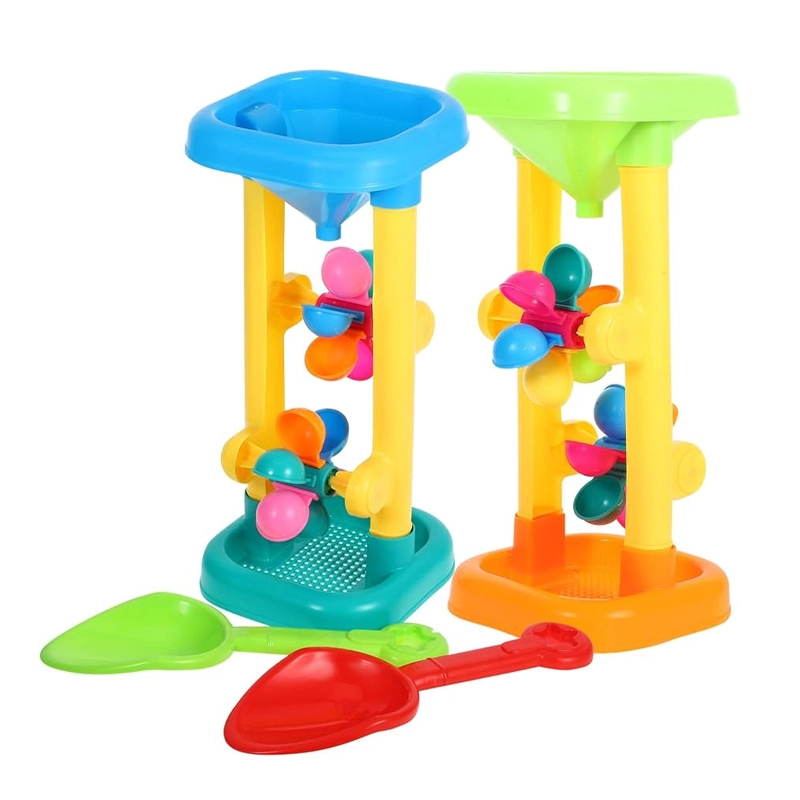
Water Wheels
Water wheels are engaging tools that spin as water is poured over them. They teach children about motion, rotation, and the properties of water. This toy also helps improve coordination and provides a fun, visual way for kids to see cause and effect.
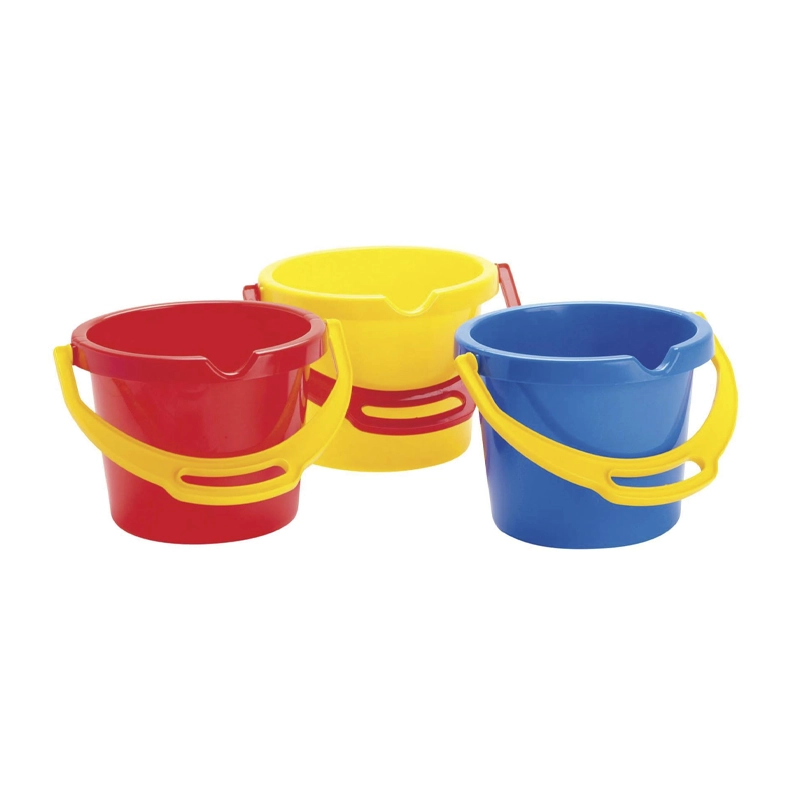
Buckets and Cups
Buckets and cups allow children to measure, pour, and mix water or sand, introducing them to basic concepts of volume and measurement. These tools encourage repetition, strengthening fine motor control and offering opportunities for pretend play and role-playing activities.
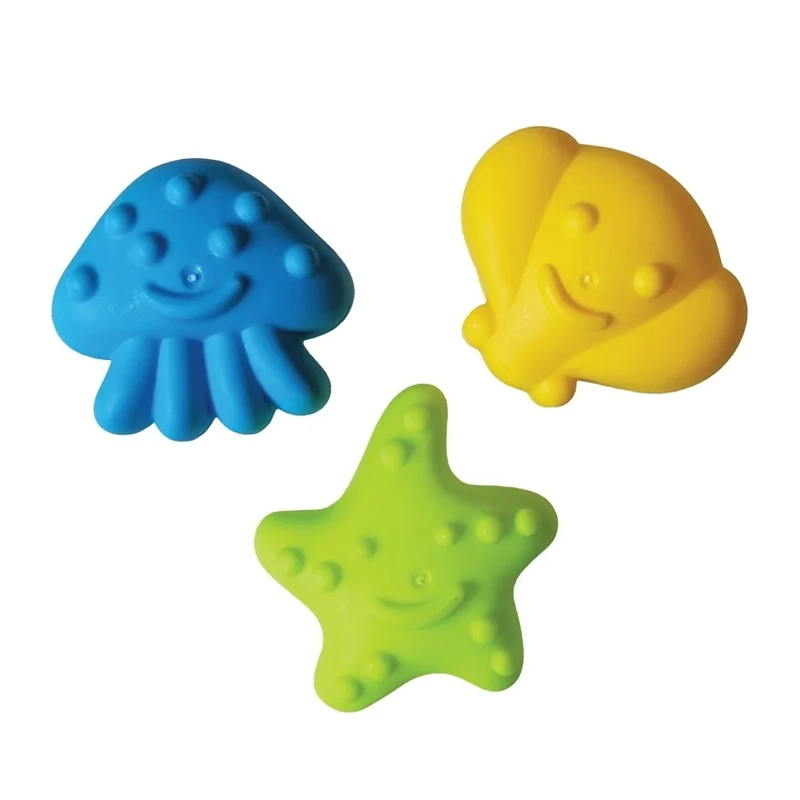
Mini Animals and Figures
Small figurines like animals, people, or vehicles can be used to create stories and scenarios in sand or water play. These toys help improve social skills, as children often engage in imaginative play with others, building narratives and acting out roles.
Maintain Sand and Water Play Table
Maintaining your sand and water table is essential to ensure longevity and cleanliness. Here are a few tips on how to keep the table in top condition:
Regular Cleaning:
Clean the sand and water regularly to remove dirt, debris, or mold buildup. Empty the water, rinse the table, and refill with fresh water. Replace the sand if it becomes dirty, sticky, or clumpy to ensure an optimal play experience.
Disinfecting After Each Use:
After every play session, disinfect the table and toys using a mild, child-safe cleaner. Wipe down the surfaces and rinse off any toys that were used. This helps prevent the growth of bacteria.
Check for Wear and Tear:
Regularly inspect the table, toys, and accessories for any signs of damage, such as cracks, sharp edges, or broken parts. Replace or repair damaged components to maintain the table’s safety and functionality.
Storage in Dry Conditions:
Store the table in a dry place when not in use, especially if it’s an outdoor table. Prolonged exposure to rain or humidity can damage the materials. Ensure the sand is kept in a dry, ventilated container to prevent mold growth.
Clean and Maintain Toys:
After each play session, wash the sand and water table toys to remove sand, dirt, and any sticky residue. Store them in a dry place to prevent mold or mildew, and inspect them regularly for signs of wear that could make them unsafe.
Avoid Contamination:
To keep the sand and water safe, discourage children from introducing non-play materials like food, mud, or chemicals into the table. These can contaminate the play environment, making it unhygienic for future use.
Fun Activities for Sand and Water Table Toys
Sand and water tables provide endless possibilities for creative, sensory-rich activities that engage children in imaginative play and educational exploration.
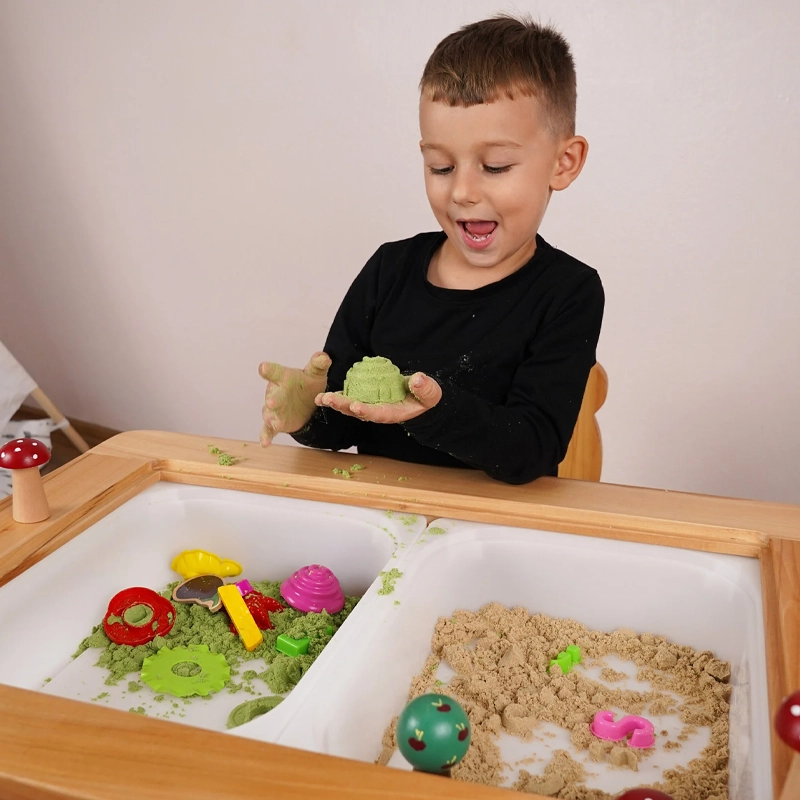
Sandcastle Building
Use molds and sandcastle tools to create intricate structures. Children can experiment with different shapes and sizes, improving their fine motor skills and creativity. Adding water to the sand helps achieve a better consistency for building.
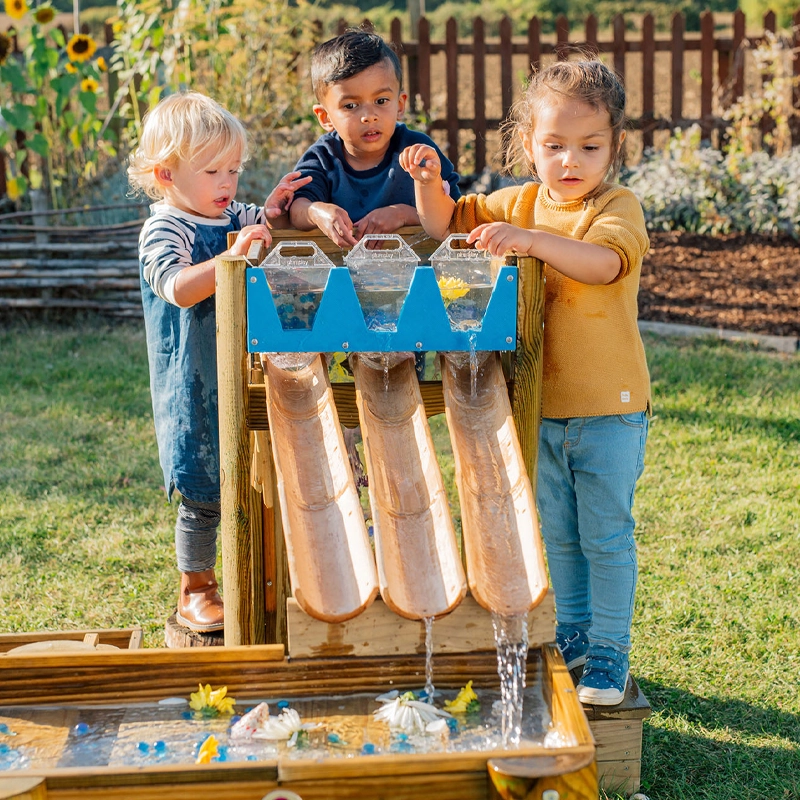
Water Flow
Set up funnels, pipes, and water wheels to experiment with water flow through different channels. Children can observe how the water moves and adjust the height, angle, or direction. This activity fosters a basic understanding of physics.
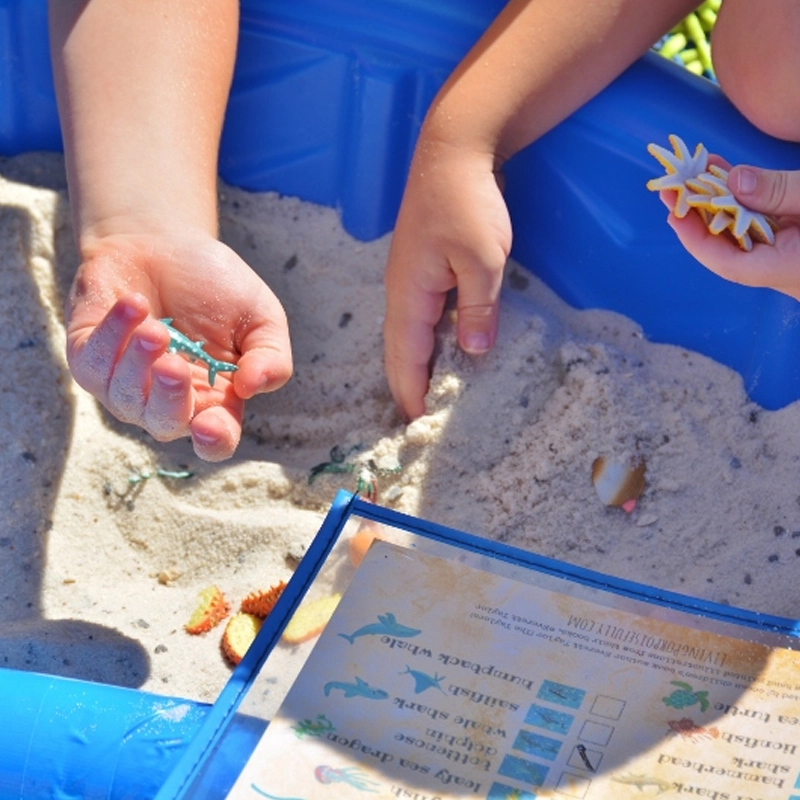
Treasure Hunt
Bury small toys or objects (like shells, pebbles, or figurines) in the sand or water and have children dig or scoop to find them. This activity promotes sensory exploration, encourages fine motor development, and sparks curiosity and discovery.
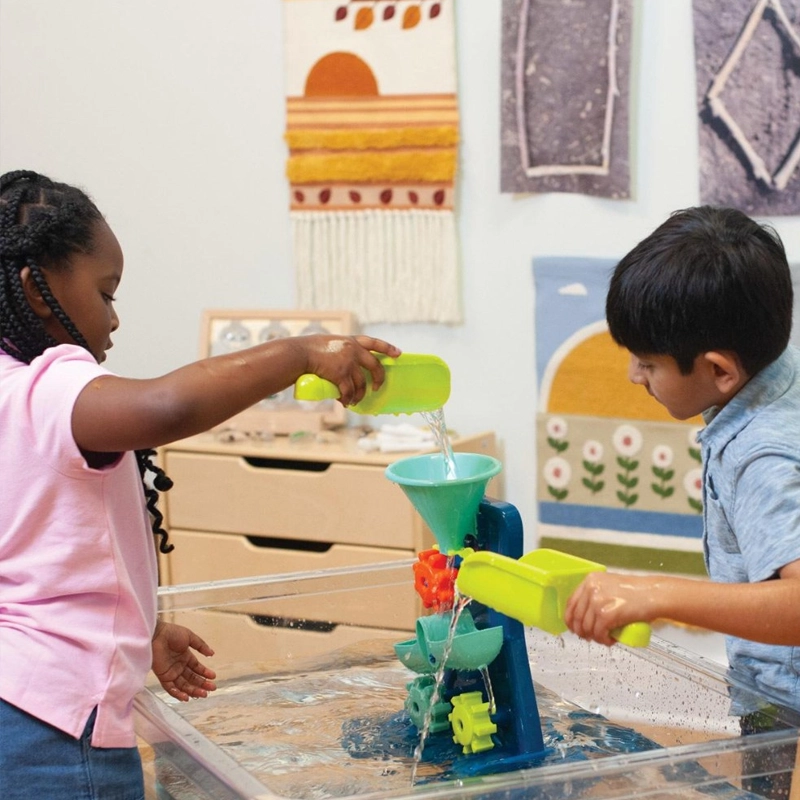
Pouring and Measuring
Provide a variety of cups, buckets, and scoops so that children can practice pouring and measuring different amounts of sand and water. This activity introduces basic math concepts such as volume and capacity while improving hand-eye coordination.
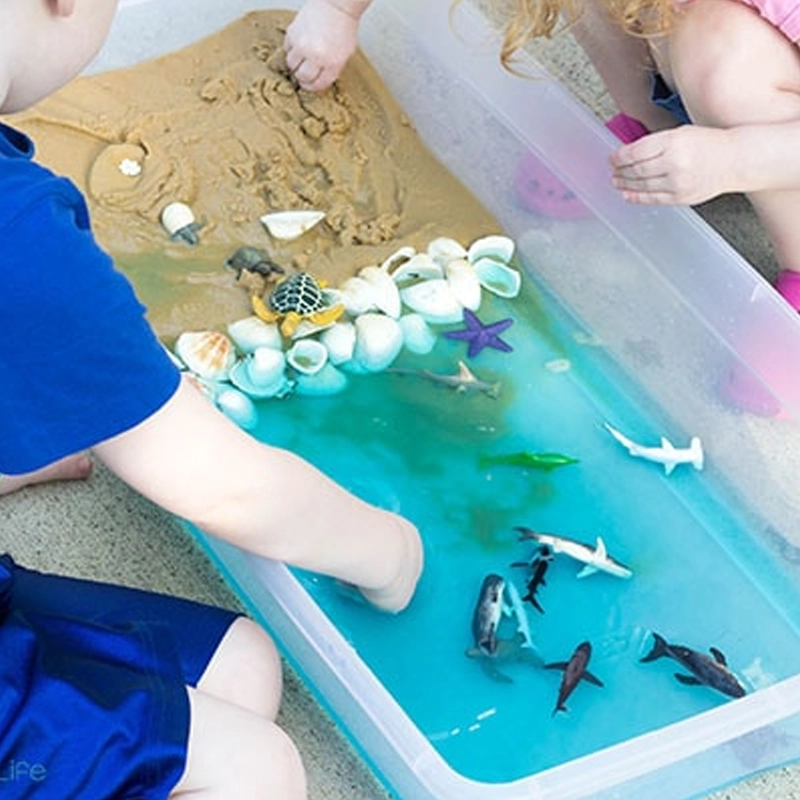
Animal Habitat Creation
Use mini animal figures and sand to create imaginary habitats. By shaping the sand and adding water, children can make deserts, jungles, or oceans. This activity enhances creativity, storytelling, and understanding of the natural world.
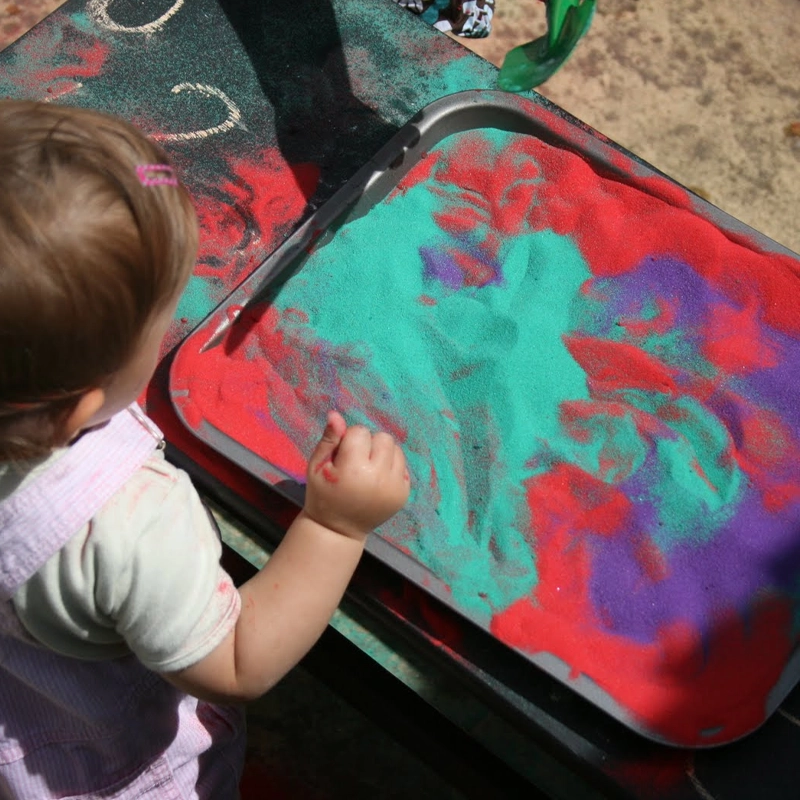
Mixing Colors and Textures
Add colored water or sand with different textures to the table and let the children mix them together. They can experiment with how the colors blend. This encourages sensory exploration and introduces basic concepts of color theory.
Best Age Group for Sand and Water Tables Activities
| Age Group | Activity | Benefits |
|---|---|---|
| Toddlers (2-3 years) | Sensory Exploration & Simple Actions: Basic actions like scooping, pouring, feeling textures of sand and water. | - Develops motor skills and hand-eye coordination. - Promotes sensory processing and curiosity. - Introduces cause and effect (e.g., pouring water). |
| Preschoolers (3-5 years) | Creative Play & Building Structures: Building sandcastles, forming shapes, experimenting with water flow using funnels and cups. | - Enhances creativity and imagination. - Improves fine motor skills like stacking, sorting, and pouring. - Promotes social skills such as sharing. |
| Kindergarteners (5-6 years) | Complex Tasks & Cause-and-Effect Exploration: Experimenting with water dynamics (e.g., siphoning, controlling water flow). | - Develops problem-solving and critical thinking. - Enhances social interaction and teamwork. - Encourages basic STEM concepts like gravity and fluid dynamics. |
| Older Children (6+) | Advanced Play & Scientific Exploration: Conducting experiments (e.g., testing sand textures, water buoyancy). | - Stimulates logical thinking and scientific inquiry. - Encourages leadership and mentoring younger children. - Explores advanced concepts in physics and fluid mechanics. |
FAQs
What safety features should I look for in a sand and water table?
Ensure the table is made from non-toxic, durable materials and has smooth, rounded edges to avoid injuries. A stable, well-balanced design is also essential to prevent tipping. Look for products with certification labels such as CPSC (Consumer Product Safety Commission) or ASTM (American Society for Testing and Materials).
How do I keep children engaged during sand and water play?
You can keep children engaged by encouraging creative projects, such as building castles, creating water pathways, or designing different water mechanisms. Rotate the materials (e.g., different sand textures or tools) to keep the play experience fresh and challenging. Providing guidance and introducing new learning objectives also helps maintain interest.
Can sand and water play help with language development?
Absolutely! As children engage in sand and water play, they naturally expand their vocabulary, use descriptive language, and practice storytelling. They also improve their listening and conversational skills, enhancing both verbal and non-verbal communication.
How can sand and water play support problem-solving skills?
Sand and water play often presents challenges, such as preventing water from spilling or figuring out how to transport materials. These activities encourage children to think critically, test out different solutions, and collaborate to resolve issues, helping to develop problem-solving and critical thinking skills.
Are sand and water table waterproof and durable enough for outdoor use?
Most Sand and Water Table Toys are made from weather-resistant, UV-protected materials, making them suitable for outdoor use. However, it’s important to store the table indoors or cover it when not in use to prolong its life and prevent exposure to harsh weather conditions.
What’s the best way to store sand and water table when not in use?
To protect your sand and water table when it’s not being used, keep it indoors or under a waterproof cover if left outside. If you’re storing it indoors, choose a dry, cool area to prevent mold buildup in the wet sections of the table.
As a leading manufacturer and supplier of preschool furniture for over 20 years, we have assisted more than 5000 customers in 10 countries with setting up their preschools. If you encounter any issues, please call us for a free quote or to discuss your needs.

